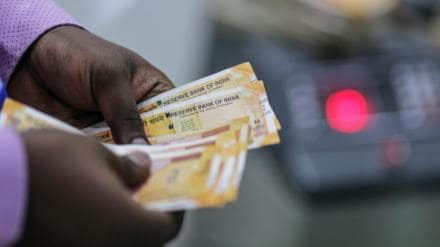The Centre has transferred assorted subsidies and sops to the beneficiaries through the Direct Benefit Transfer (DBT) worth about Rs 4.15 lakh crore so far in the current financial year, reflecting an acceleration in the pace of government spending in the third quarter.
The Centre had undertaken DBT worth about Rs 2.3 lakh crore in the first half of FY25, as general elections and late full budget presentation slowed down the implementation of programmes.
DBT transfers reached a record Rs 7.16 lakh crore in FY23, largely due to the free grains scheme and higher subsidies on fertiliser due to price rises. According to the trends, the DBT in FY25 could be slightly lower than Rs 6.91 lakh crore in FY24.
Given that the full Budget was presented in July, many new scheme rollouts were delayed including the new or revamped schemes like Pradhan Mantri Awas Yojana-Gramin (PMAY-G) and Urban (PMAY-U) and employment-linked incentives.
Of the DBT transfers so far in FY25, Rs 2.54 lakh crore or 61% was in kind and the balance cash transfers to Aadhaar-linked bank accounts.
Subsidies worth Rs 1.21 lakh crore were transferred towards subsidised fertiliser so far in the current financial year while subsidies worth about Rs 1.08 lakh crore were transferred to beneficiaries via foodgrains under the public distribution system (PDS).
Around Rs 52,492 crore have been transferred for the job guarantee scheme (MGNREGS) so far in FY25 and Rs 11,860 crore for subsidised cooking gas.
For Pradhan Mantri Gramin Awas Yojana-Rural (PMAY-R), Rs 16,566 crore has been transferred in so far in FY25 compared with the budget outlay of Rs 54,500 crore for the full year, indicating that there would be a shortfall in spending this year.
DBT for most of the central government schemes (320) resulted in Rs 3.5 lakh crore savings due to plugging of leakages between FY15 and FY23.
More than 167.8 crore beneficiaries for different schemes are registered under various DBT schemes.
The DBT-induced savings gave the managers of government finances significant headroom to improve spending quality and offer additional welfare benefits to deserving beneficiaries, without constraining the exchequer too much.
